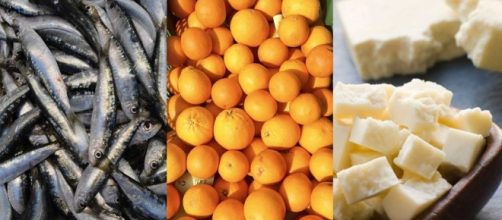Thought your only way of getting a daily dose of calcium was in your morning bowl of cereal? Well these five foods prove that you don't need milk and cheese to get in a proper nutrient boost.
1) Sardines
Yes, those tiny fish in cans are a source of calcium. In one serving there is 240 mg. That is the same amount of calcium in a serving of semi-skimmed milk! How do they carry this calcium punch? The canning process actually softens the sardines bones so that they can be safely eaten.Try them on top of a salad for flavor. Or, if eating the little fish freaks you out,cook them as the heat will actually soften and dissolve them.
2) White Beans
Thinkcannellini, great northern, and black eye. These beans carry 132 mg in 1 serving (80 g raw/200 g cooked), putting themin competition with mascarpone, ricotta, and feta cheese.
Add them to a salad, wrap, or soup. Or make a dip for next weekends game day festivities. So next time you go to the grocery store, think about getting some beans.
3) Water Cress
Probably the lesser known of all the leafy greens, this veggie has 188 mg in 1 serving, raw. That makes it the perfect substitute for yogurt. With numbers like these maybe cress will be the next kale?
Use for salads, wraps, or sandwiches. Or wilt into a curry or stir-fry for something different.
4) Broccoli and Rhubarb
Yes, rhubarb.
One of the most ignored vegetables in the grocers because nobody thinks about using it in their meals. But broccoli, at 112 mg, and rhubarb, at 103 mg, are surprising sources of calcium. While they may not be as big of a contender as their fellow veggiewater cress, try adding these to your meals for a calcium boost.
After all, rhubarb makes a mean pie (think strawberry, but not as sweet).
5) Tofu
Think goingvegan means taking calcium supplements?Not with tofu packing 126 mg in 1 serving! That'smore calcium than in a serving of vanilla ice cream.
Make a tofu scramble or add to a soup or stir-fry. Tofu takes on the flavor of whatever you're cooking, which makes it a flavorful mouthful in yummy dishes like pad thai.
How much calcium do we need?
The number can depend on gender and age, but typically by the time we reach 4 years of age, we should be receiving 1,000 mg of calcium a day. Besides bone health, calcium can help lower cancer-risks, high blood pressure, and cardiovascular disease. However, getting too much calcium is harmful and can cause increased risk of kidney stones, heart disease, and prostate cancer. It can also inhibit the absorption of iron and zinc
To properly absorb calcium we need other nutrients in our diet like magnesium, so don't forget that balanced consumption of nutrients and minerals will give you the most health benefits.

